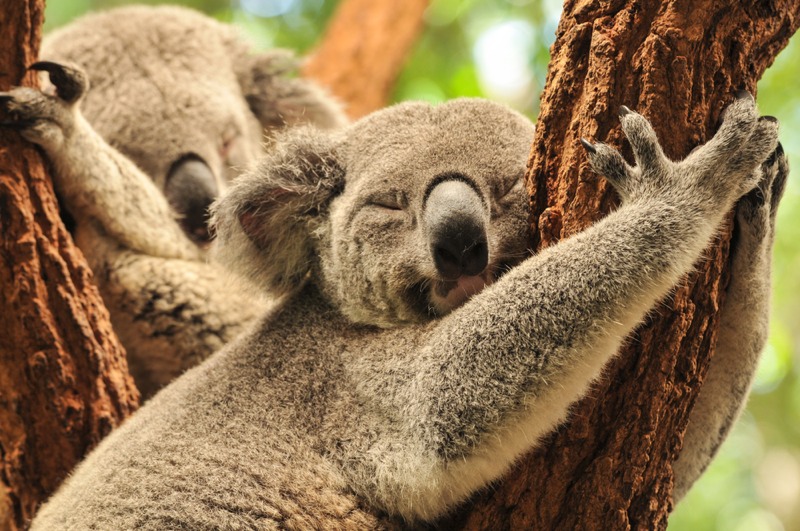Animal Sex: How Koalas Do It

With a diet based on eucalyptus leaves that are very fibrous and low in nutrition and calories, koalas live a pretty lazy life, spending between 18 and 22 hours a day asleep. But does this lethargy also translate into the bedroom, or do koalas maintain an exciting sex life?
Found throughout the eucalypt woodlands of Australia, koalas are quite solitary animals. Each individual sets up a home range, which can span a few acres to hundreds of acres. Though these home ranges can overlap a bit, the marsupials rarely run into each other. If two territorial males do encounter one another, things can get ugly, but this happens infrequently.
"The fights that the males have are pretty ferocious up in the trees," said Bill Ellis, a koala researcher with the University of Queensland in Australia. "We think that, by and large, the fighting is a really significant biological event for them, and that's probably why they are not so common."
During the mating season, which occurs in the spring and summer, interactions between the animals do increase, but not by much, Ellis told Live Science. During this time, particularly at night between 12 a.m. and 4 a.m., males make loud mating calls, called bellows, while sitting comfortably in their home ranges. The bellows, researchers have found, are produced by a structure in the animal's larynx, provide information about the size of the koala and are unique to each individual.
Scientists once thought the largest, most dominant males got all the females, who would seek them out by zeroing in on their telltale bellows. But when Ellis and his colleagues looked at the paternity of newborn joeys in the wild, they found that size wasn't everything — turns out, the female koalas mate with a different male each year. "It seems that the females are actually using the bellows to look for a unique mate," Ellis said.
Though it's not entirely clear how things play out, scientists think when a female hears a bellow she likes, she will go on an excursion to find him in his home range. When a male finds a female in his territory, he will approach her in a tree, sniffing constantly as he gets closer to her.
Researchers don’t know how a female decides whether or not she's interested in the male, but she'll cry out if she doesn't want to mate with him. The male, being much larger, can try to force himself on her, but she'll bite and scratch him, climb away and even jump to another tree branch. "She'll do everything in her capacity to reject him," Ellis said, adding that females appear to reject males successfully more than they accept them in the wild.
Sign up for the Live Science daily newsletter now
Get the world’s most fascinating discoveries delivered straight to your inbox.
When a female does accept a male, the pair quickly gets to business. "It's not a particularly gentle process," Ellis said.
The male climbs onto the female from behind, bites the back of her neck and briefly copulates with her. Like kangaroos and most other marsupials, male koalas have a double-headed penis and females have two vaginas (a third birthing vagina later forms to bring the new joey into the world, and then closes back up). [The 7 Weirdest Animal Penises]
The female then returns to her home range to gestate for a little over a month; she won't begin the mating game again until her offspring is fully weaned, about 12 months later. The male, on the other hand, may go on to mate again once or twice more that season.
Follow Joseph Castro on Twitter. Follow us @livescience, Facebook& Google+.










